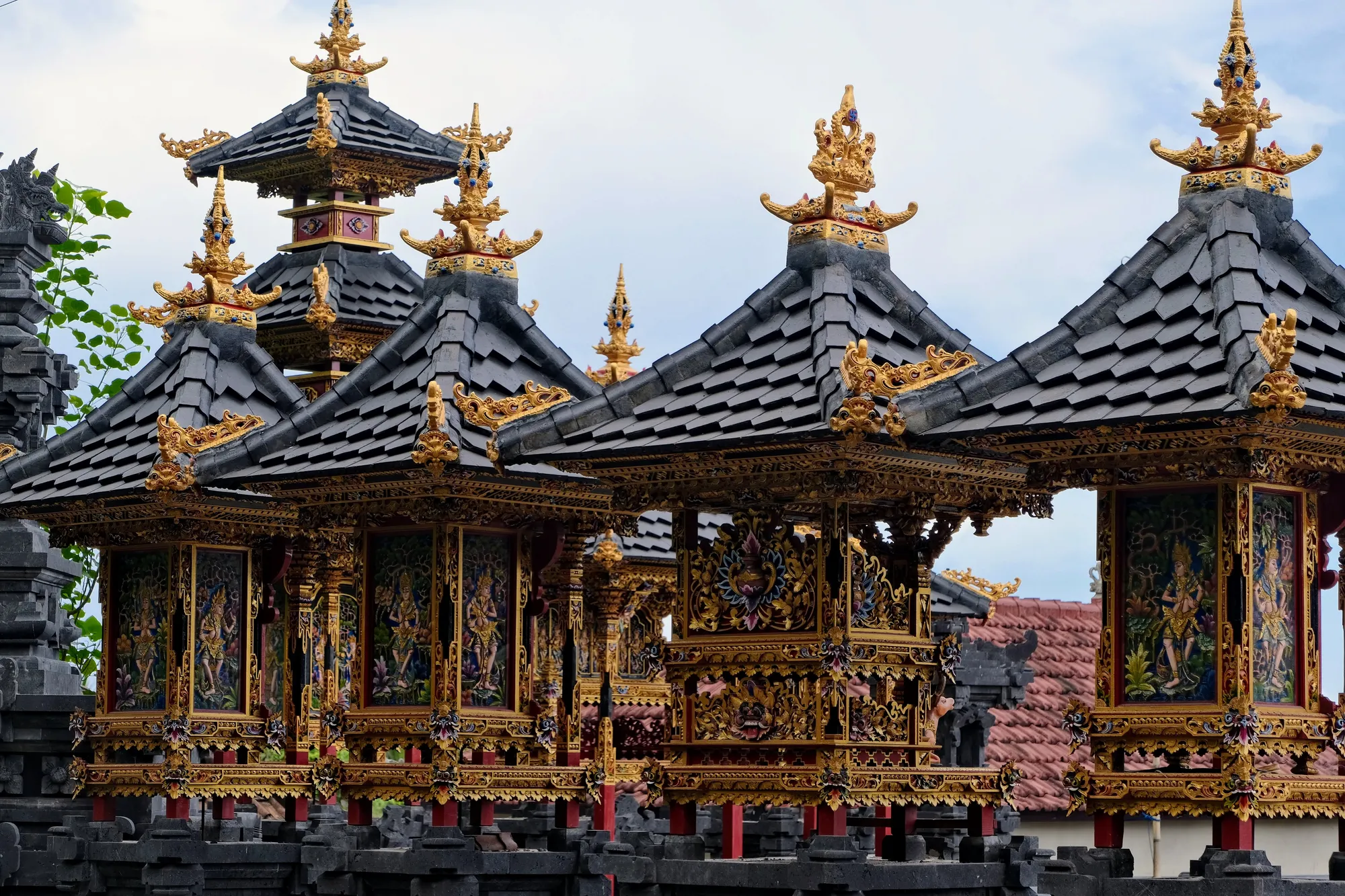Bali's Hindu Culture
When we chose Bali as our gateway into Southeast Asia, we were pleasantly surprised to discover how spirituality is deeply woven into the fabric of daily life, intricately linked to the island's unique form of Hinduism that lies at the heart of its vibrant cultural identity. The roots of Balinese Hinduism stretch back over a thousand years to when Indian traders and priests brought Hinduism and Buddhism to Indonesia.
Though much of the archipelago eventually embraced Islam, Bali held onto its Hindu roots, adapting the religion to the island’s ancient animist traditions and blending them with ancestor worship. Over the centuries, Balinese Hinduism evolved into a rich, distinct culture that shapes everything from art and architecture to festivals and family life.
As you explore Bali today, from its towering temples to everyday rituals, you’ll witness a living history that draws from the past while remaining a vibrant part of the present. In this post, I’ll share with you the traditions, beliefs, and ceremonies that make Balinese Hindu culture such a profound and unforgettable part of the island’s charm.
Offerings and Rituals
After our twenty-hour flight to Denpasar, we were immediately enveloped in the spiritual rhythm of Balinese life. The fragrant scent of incense marking the start of daily worship greeted us as we stepped off the plane, while the melodic sounds of prayers from nearby temples filled the air.
It was a sensory immersion into the Hindu rituals that have shaped Balinese culture for nearly 2,000 years, giving us an instant connection to the island’s deep spiritual roots.
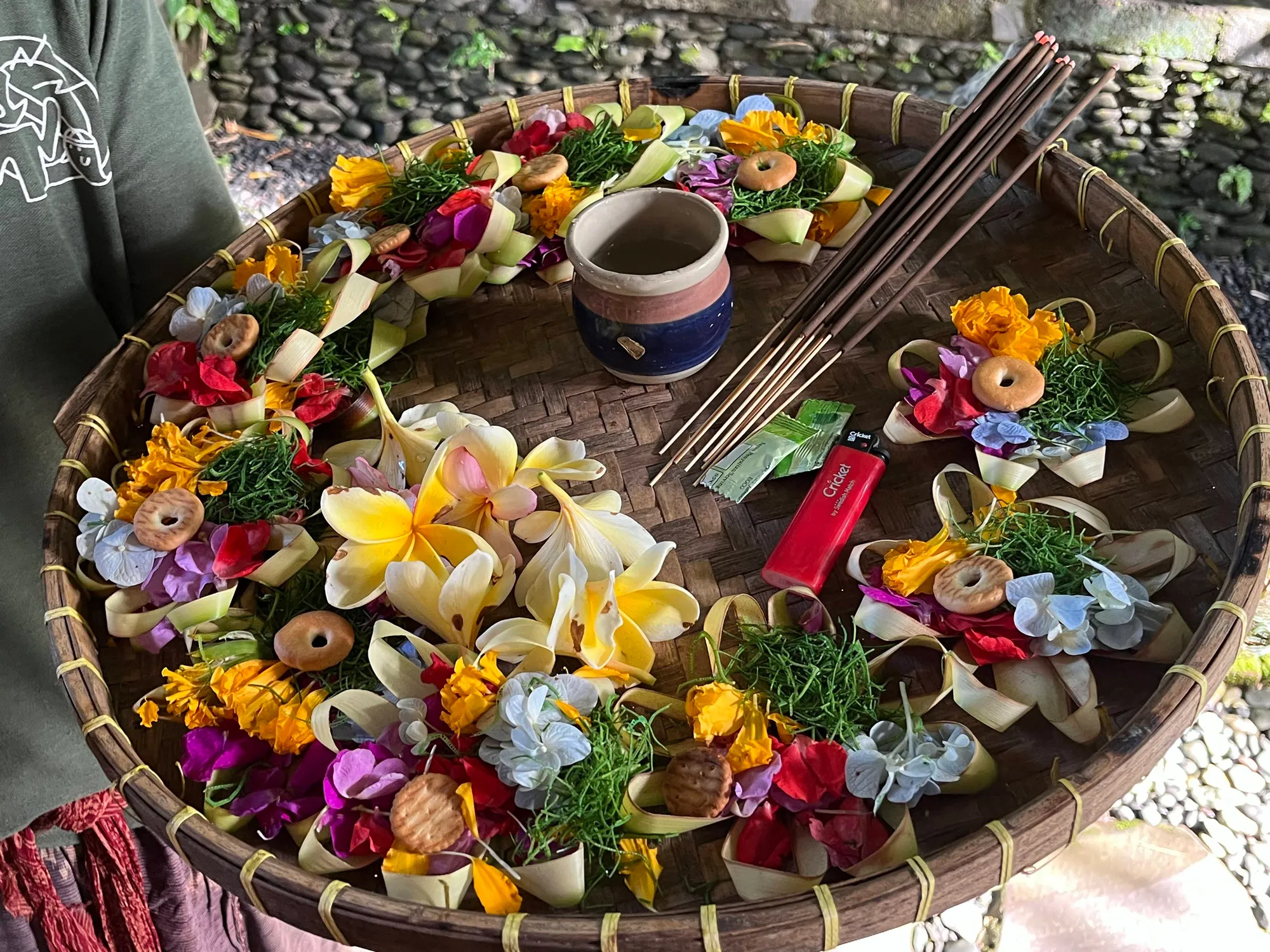
We had heard about Bali's rich spiritual traditions before traveling to the island, but we didn't expect to see these rituals being performed so regularly and with such devotion. Every morning, the house owner of Noka House, where we stayed, performed daily offering rituals, laying out beautifully arranged baskets of flowers, rice, and incense around the house and yard.
These offerings, or canang sari, are typically placed at the entrance, on house altars, or even in the kitchen to seek blessings and balance. The placement of the offerings is highly significant, as it maintains harmony with both positive and negative energies, creating an environment of spiritual well-being.
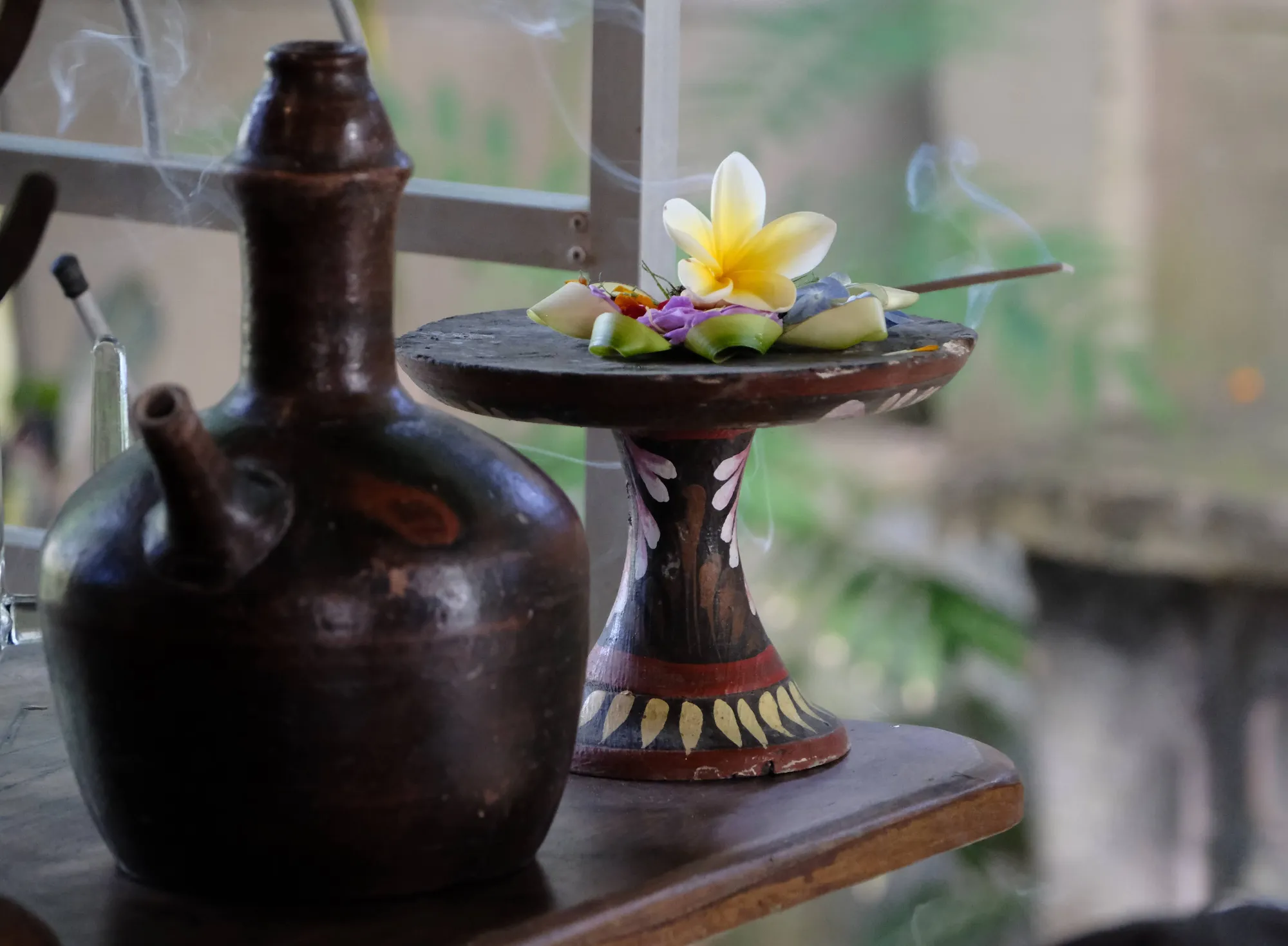
These offerings were everywhere we went—on temple steps, at beaches, and even on fishing boats. Balinese Hinduism revolves around the concept of maintaining harmony between humans, nature, and the divine, following the principle of Tri Hita Karana.
The people believe in balancing good and evil, worshiping a supreme god alongside deities like Brahma, Vishnu, and Shiva.
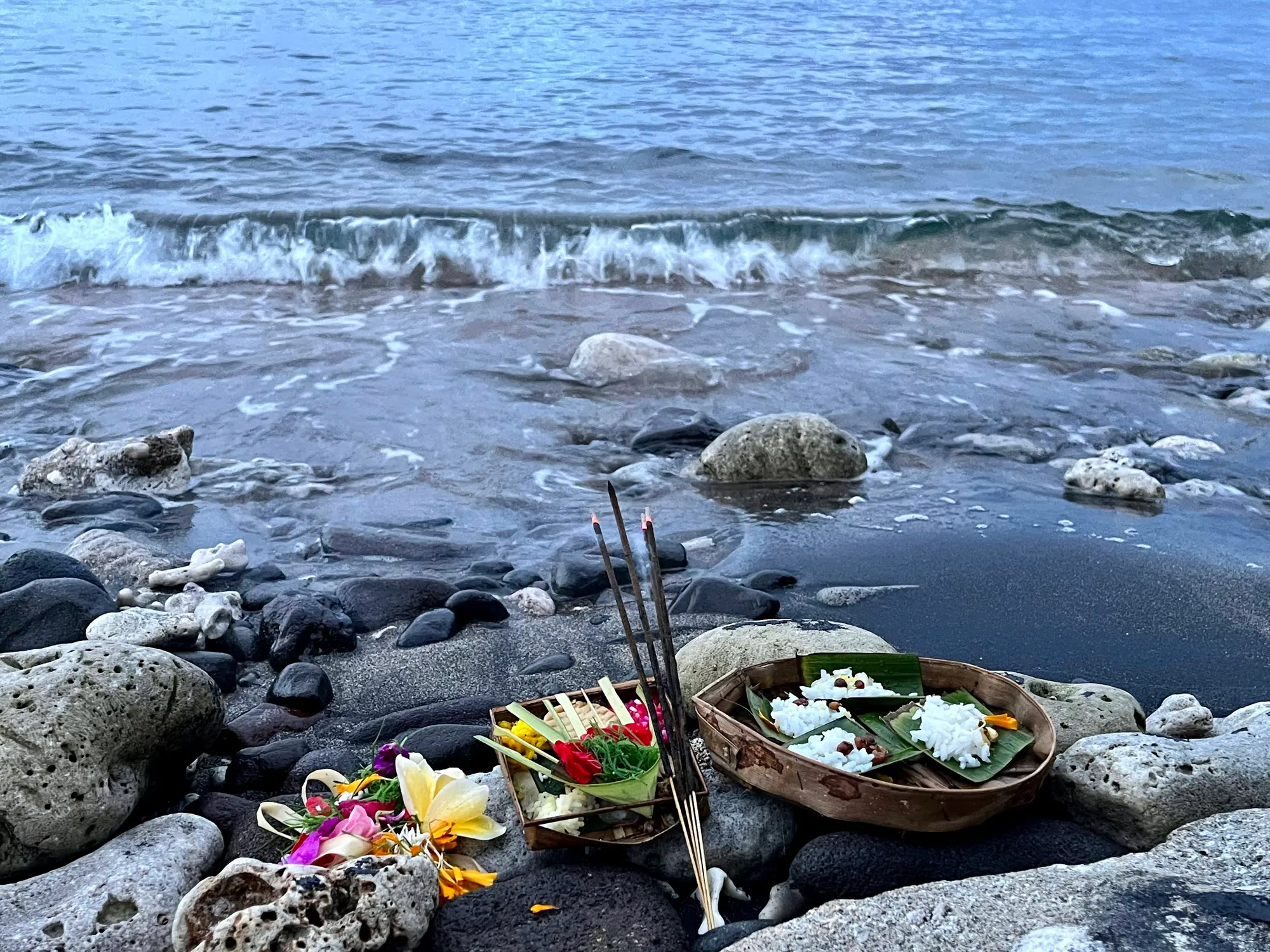
Ancestor worship also plays a key role, with offerings ensuring peace and connection with the spiritual world. Witnessing these rituals was a beautiful reminder of how spirituality permeates every aspect of life in Bali.
Saraswati Temple
Bali, often called the "Island of a Thousand Temples," is home to countless large and small temples seamlessly woven into daily life, earning the island its fitting nickname. Our first experience visiting a village temple or pura was in Ubud, where we discovered the serene Saraswati Temple. Nestled behind the bustling main streets, this stunning water temple is dedicated to Dewi Saraswati, the goddess of knowledge and arts.
Built in the 1950s by the renowned Balinese architect I Gusti Nyoman Lempad, the temple reflects traditional Balinese architecture and artistry. It showcases intricate carvings and exquisite stone reliefs depicting various aspects of Hindu mythology.
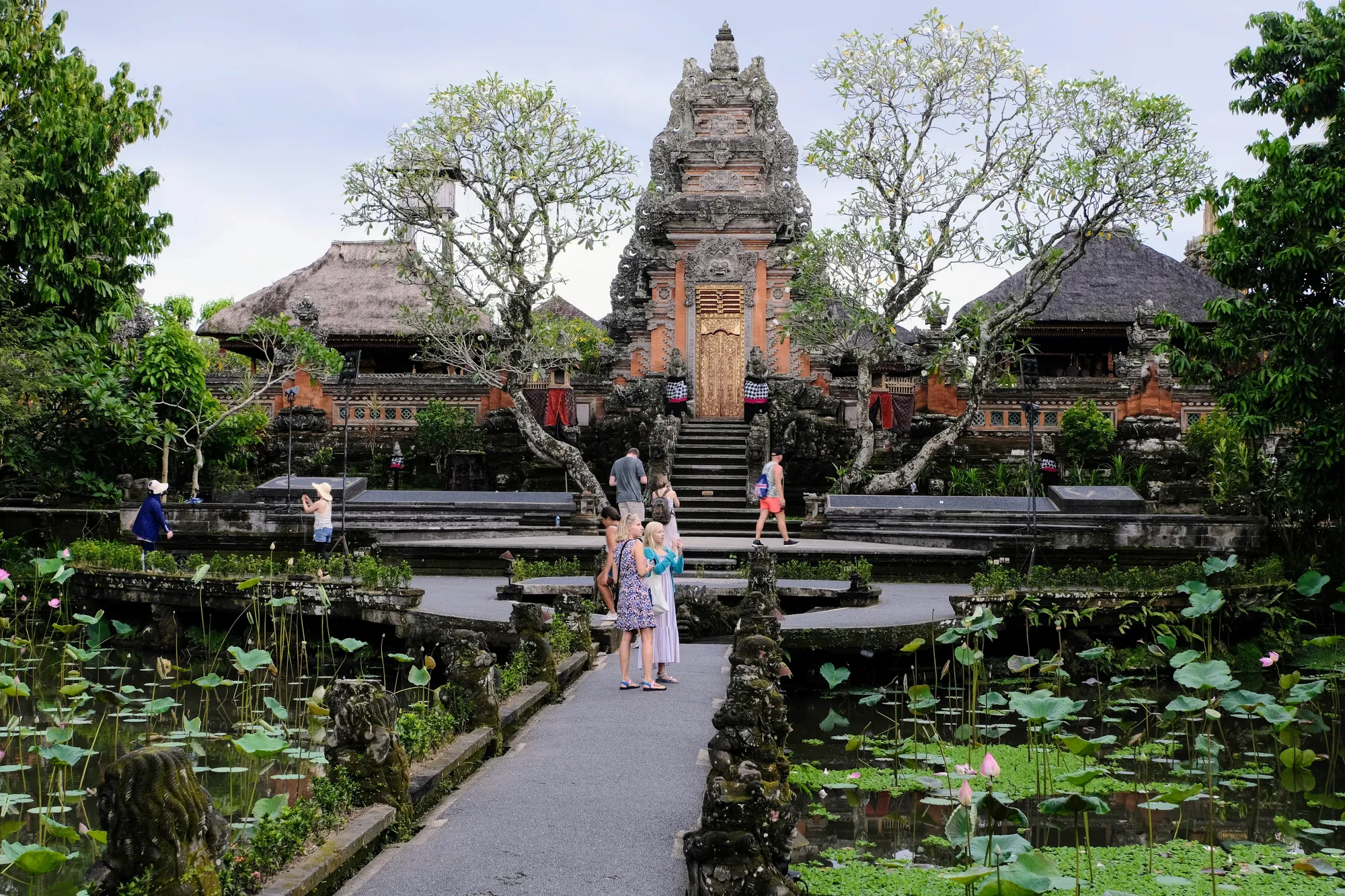
Visitors enter through a path flanked by blooming lotus flowers and are met with ornate stone gates and statues honoring Saraswati. While primarily a place of worship, the temple also hosts traditional Balinese dance performances, allowing visitors to experience Ubud's vibrant cultural heritage amidst this peaceful setting.

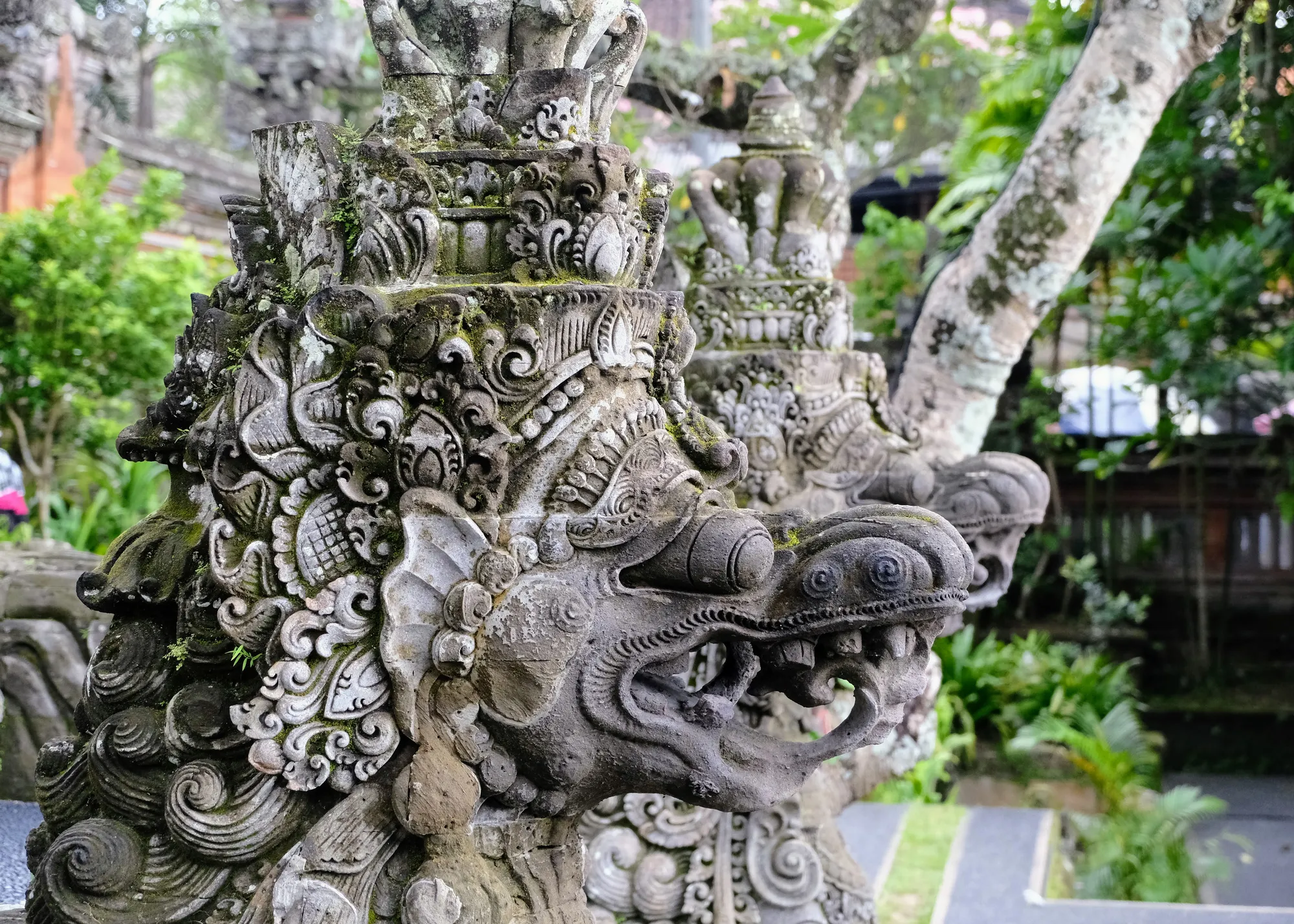
We were pleasantly surprised to find this peaceful retreat from the lively markets and cafes nearby. It felt like a hidden sanctuary, where the hum of Ubud gave way to this spiritual haven's quiet beauty and calm.
The Story of Ramayana
Visiting Bali wouldn’t be complete without witnessing a traditional Balinese performance. Kecak & Fire Dance combines storytelling, music, and dramatic expression, often showcasing themes from Hindu epics like the Ramayana. While there are a few Kecak Dance performance venues in Ubud, we chose the Kecak & Fire Dance at Pura Puseh for its intimate setting, and it did not fail to captivate us.
Set in the open courtyard of this ancient pura, the performance drew us in with its hypnotic chants, as a large circle of men rhythmically chanted "cak" in unison, creating a mesmerizing atmosphere.
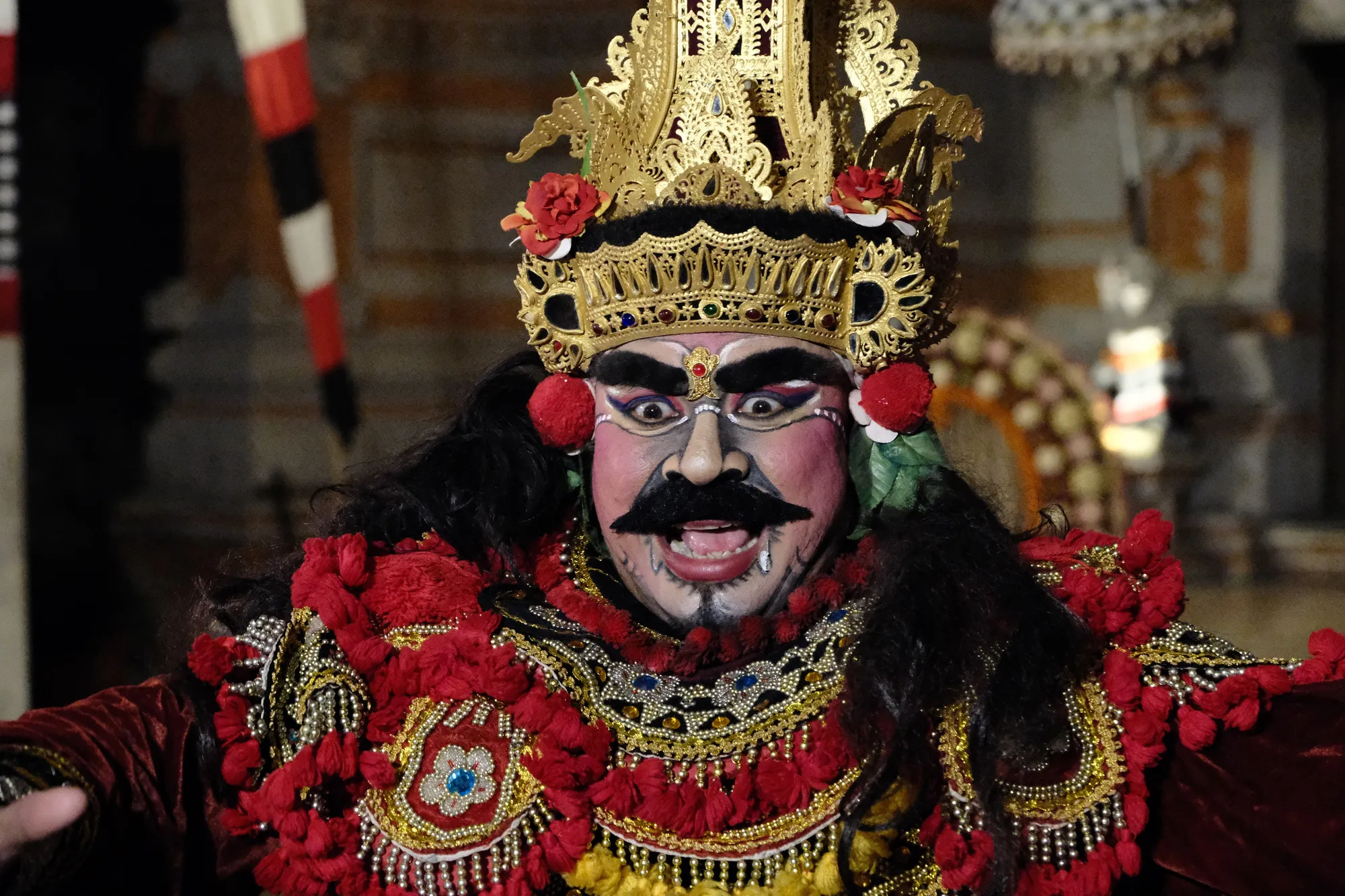
The story of the Ramayana unfolded through dynamic movements and fire, while the temple’s historic setting added a deep spiritual resonance to the performance. As the flames flickered under the night sky, the powerful energy of the dance, combined with the sacred surroundings, made for an unforgettable evening.
Immersed in Bali’s rich cultural heritage, we felt a profound connection to the traditions being celebrated before us.
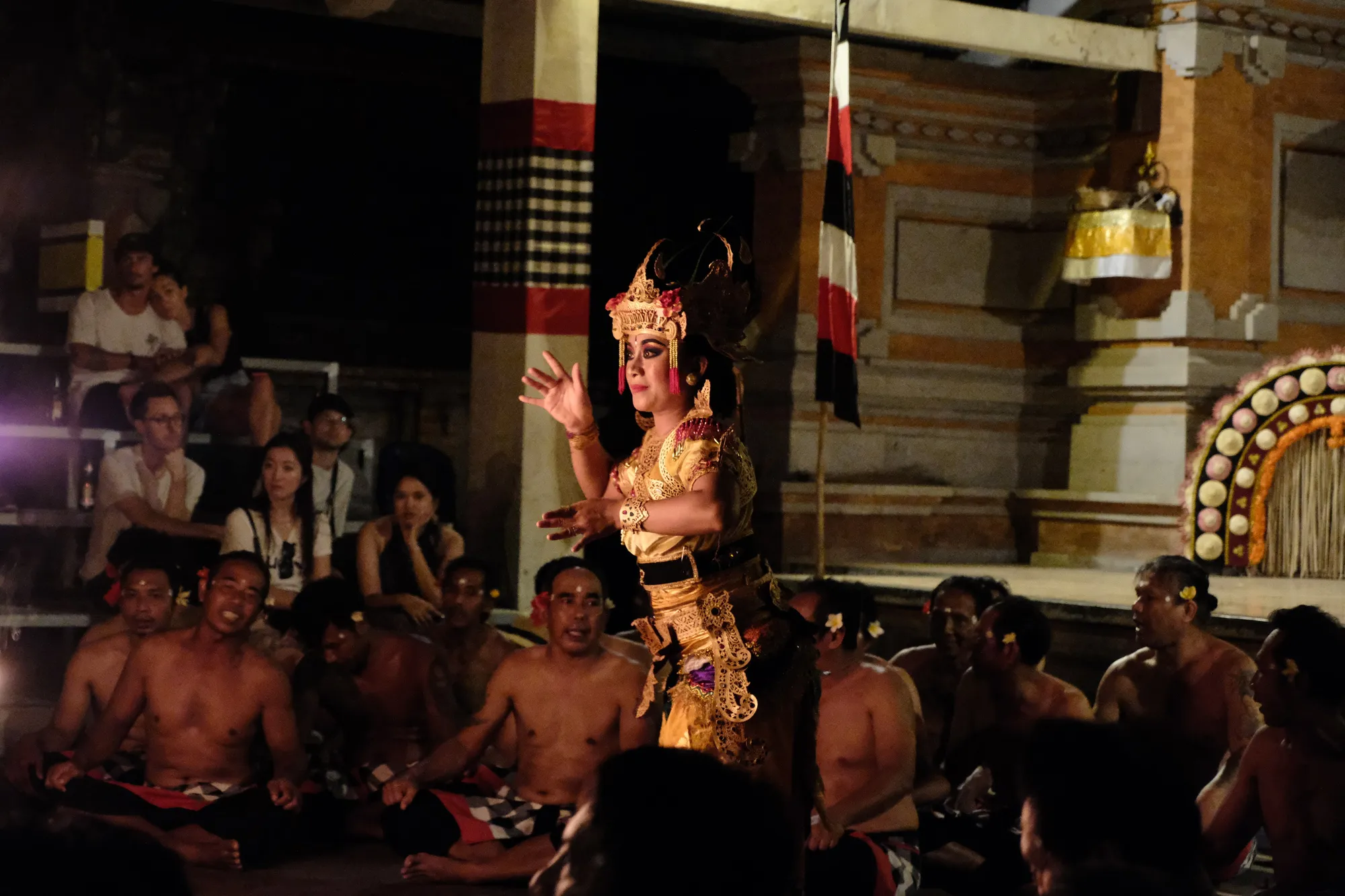
Beyond the Gateway of Heaven at Pura Penataran Agung Lempuyang
Visiting Pura Penataran Agung Lempuyang system of temples was a breathtaking experience steeped in history and spirituality. Nestled on the slopes of Lempuyang Mountain, this ancient and revered site dates back over a thousand years and is part of Bali’s “six sanctuaries of the world,” serving as a spiritual pillar for the island.
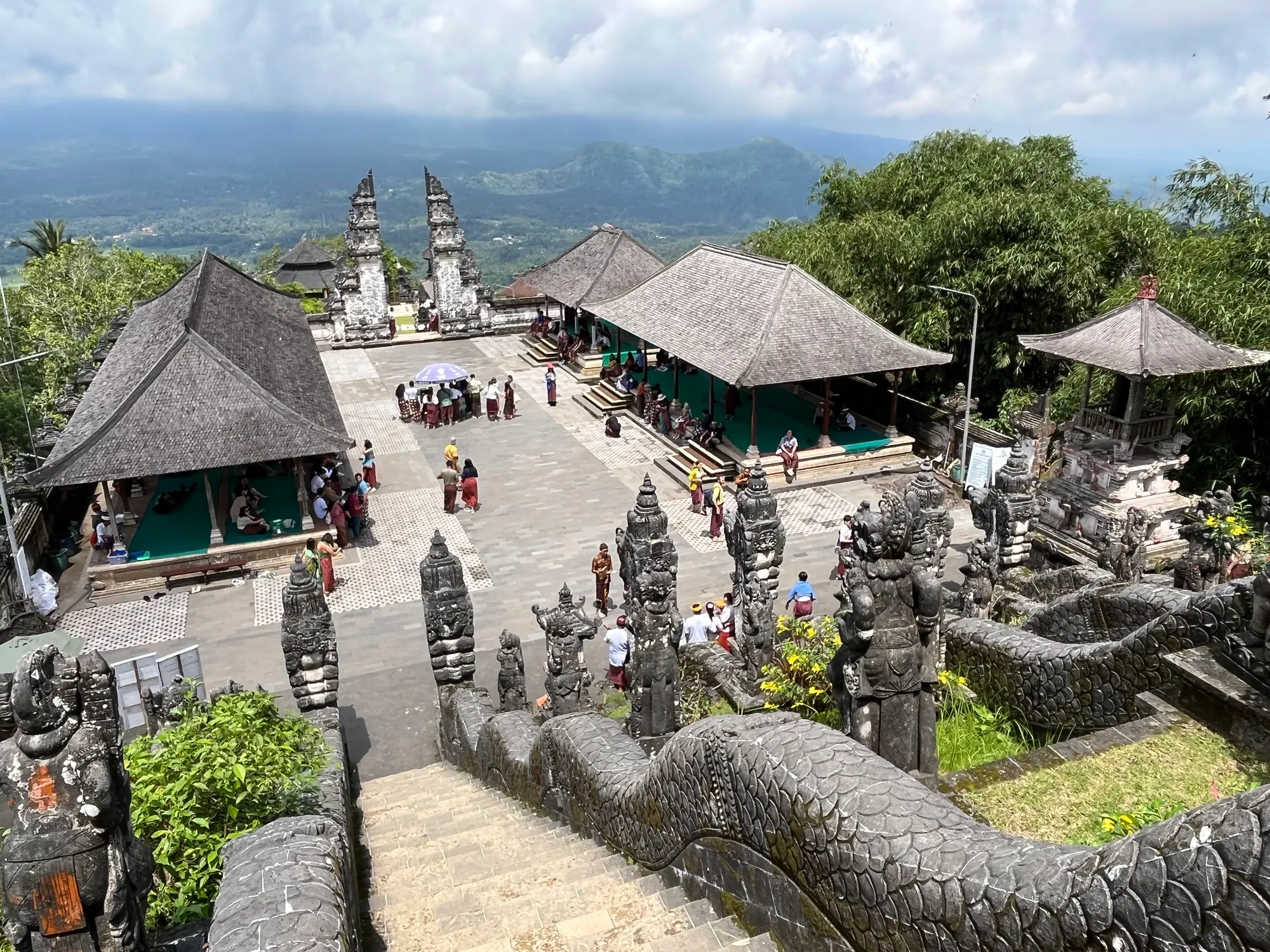
Visitors must climb over 1,700 steps to reach the main temple, a journey symbolizing spiritual ascent. We hiked up to an elevation of about 1,000 meters, where the air turned cool, and misty clouds enveloped the landscape, adding to the mystical atmosphere.
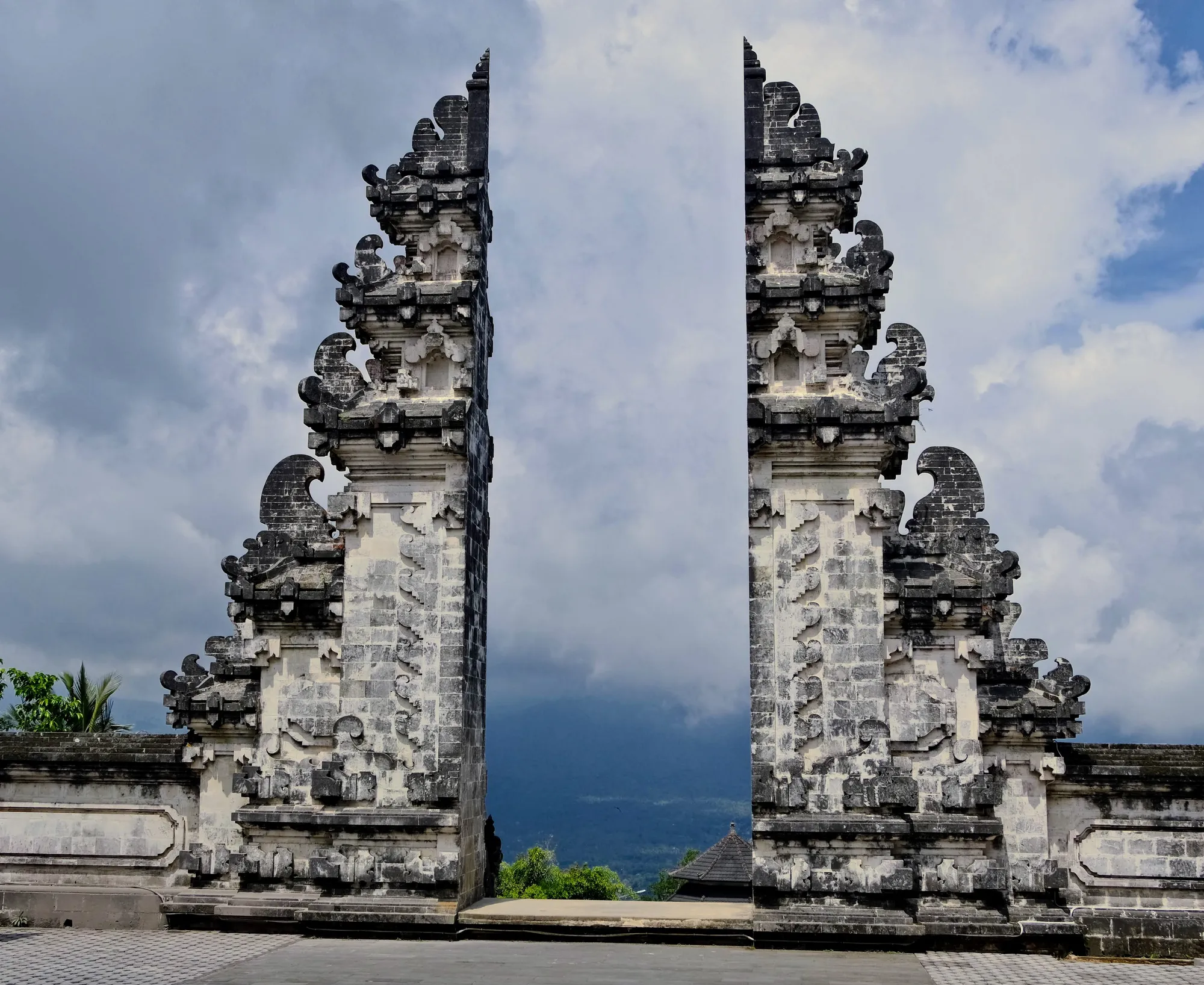
Many visitors flock here to capture the iconic photo in front of the famed Gates of Heaven, often overlooking the rest of the expansive complex.
As we ascended, we quickly lost the crowds at the first temple, allowing us to immerse ourselves in the serene atmosphere of this sacred site. Known as one of Bali's oldest and most revered temple complexes, Pura Lempuyang is dedicated to the Hindu god Shiva and is believed to be a powerful spiritual center.
Along the way, we passed local families who came to worship, each carrying baskets full of offerings, adding a deeply authentic touch to our journey.
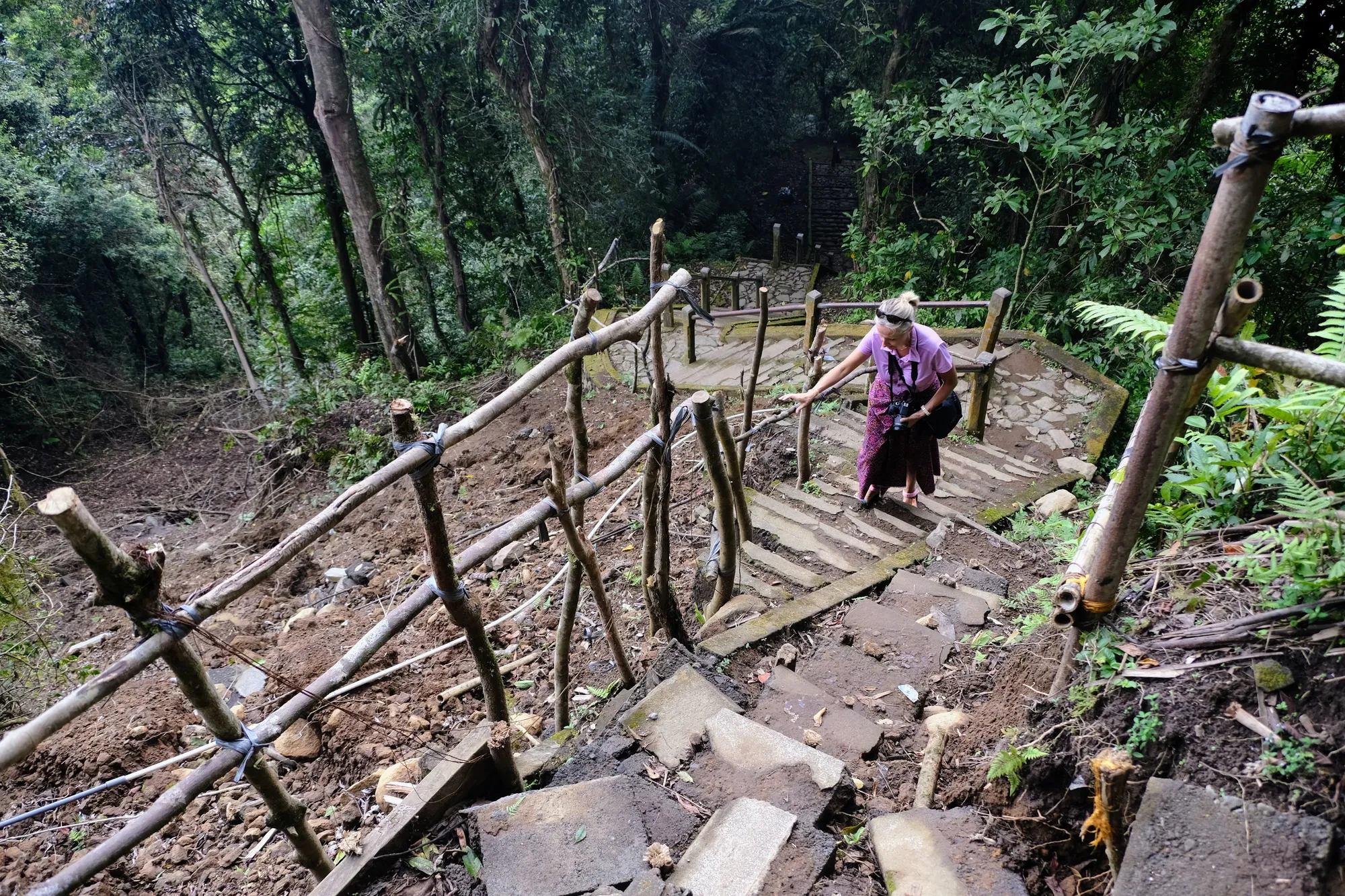
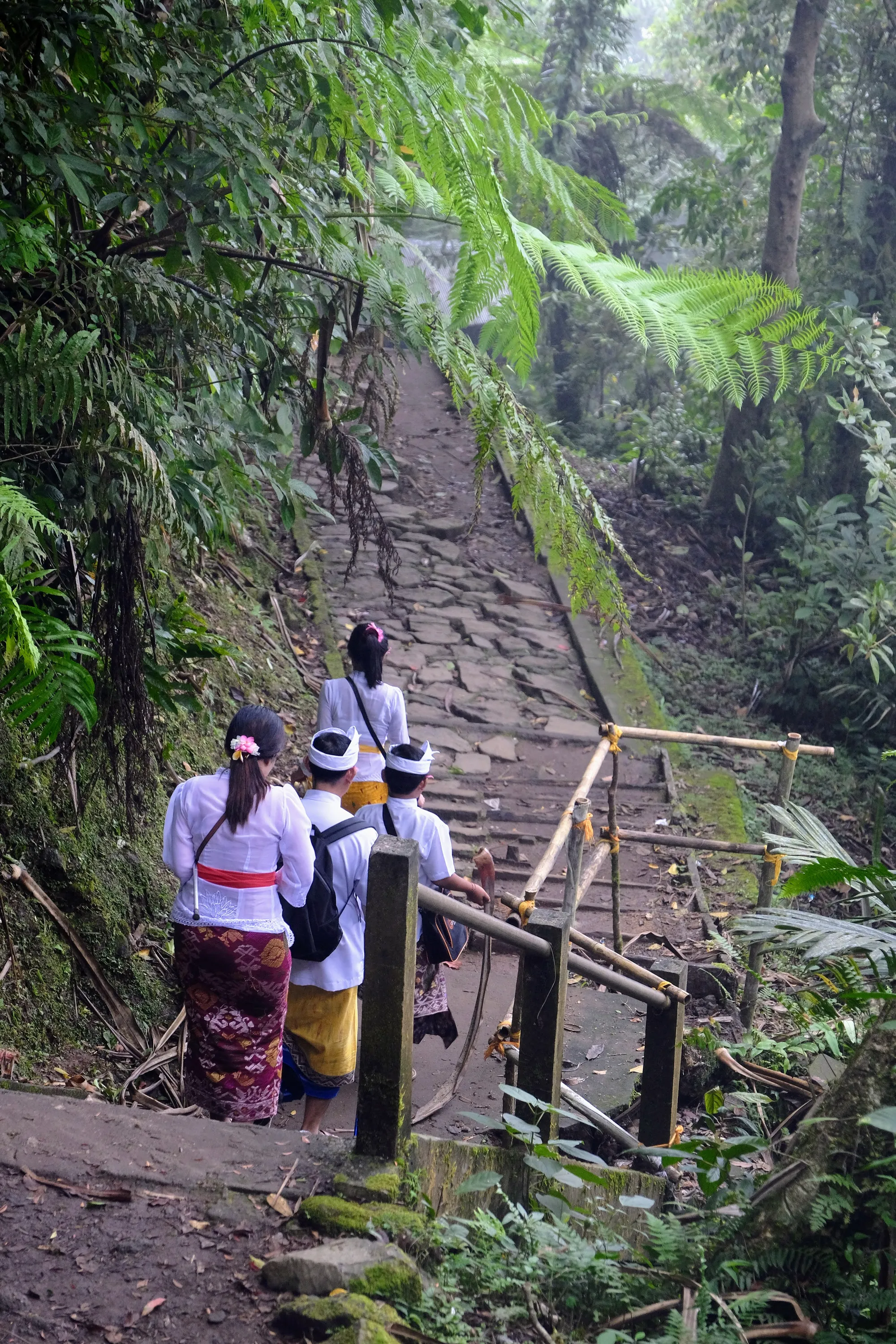
As you climb the stairs, small food booths appear at intervals, allowing tired worshipers to replenish their energy with a snack or drink before continuing their ascent.
We also encountered mischievous monkeys lingering near the temples and snack stations, playfully snatching anything they could find. These monkeys tend to occupy areas close to the temples and food booths, taking full advantage of the snacks and offerings left unattended by visitors.

As we continued our journey through the temple complex, we observed worshipers at various temples, immersed in quiet devotion and surrounded by a serene, reverent atmosphere. Balinese families often bring entire baskets filled with offerings to temples like Pura Lempuyang, each basket a work of art in itself. These baskets, which can be quite elaborate, contain canang sari (small daily offerings) alongside larger offerings of fruit, rice cakes, flowers, and incense, often stacked in stunning arrangements that reflect care and reverence.
Watching families present their offerings, we felt the beauty of their spiritual connection, woven into the rituals that sustain the island’s traditions.
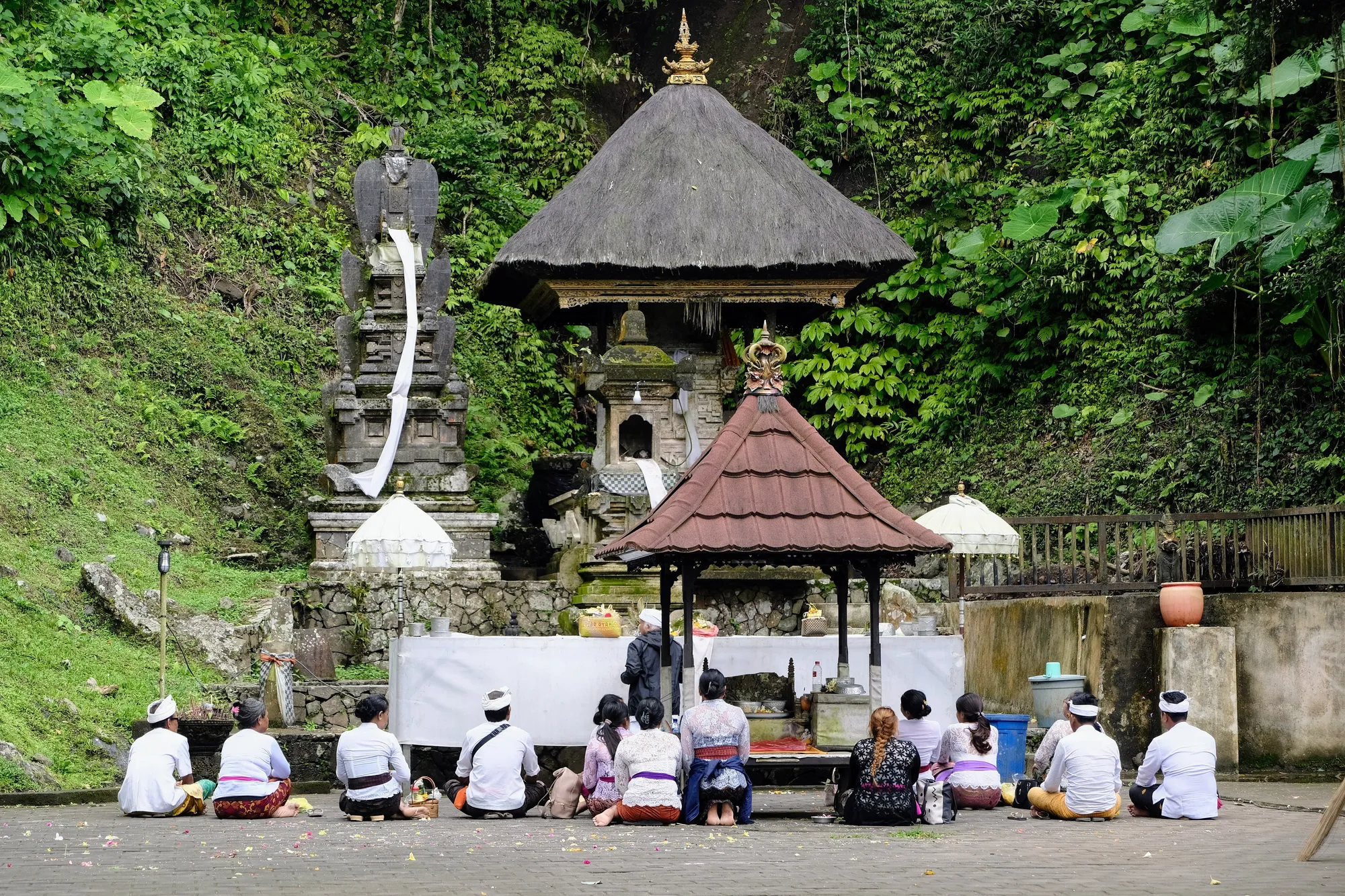
While many people come to Pura Lempuyang Luhur for the iconic Gates of Heaven, the rest of the complex is equally stunning and offers an authentic experience that many people miss. Our exploration through the temple system revealed breathtaking views and a profound sense of tranquility, making it feel like a genuine escape into Bali's rich cultural heritage.
Balinese Traditions Meet European Influences at Taman Ujung Water Palace
Driving around the Gunung Bibis volcano south of Amed, we found ourselves on a narrow and winding road along the east coast. This road took us through some authentically local villages, offering a glimpse into the everyday lives of the Balinese people.
Our destination, Taman Ujung Water Palace, was a stunning sight to behold. This beautiful palace, built in the early 20th century, features enchanting pools, ornate pavilions, and lush gardens, all set against the backdrop of the volcano.
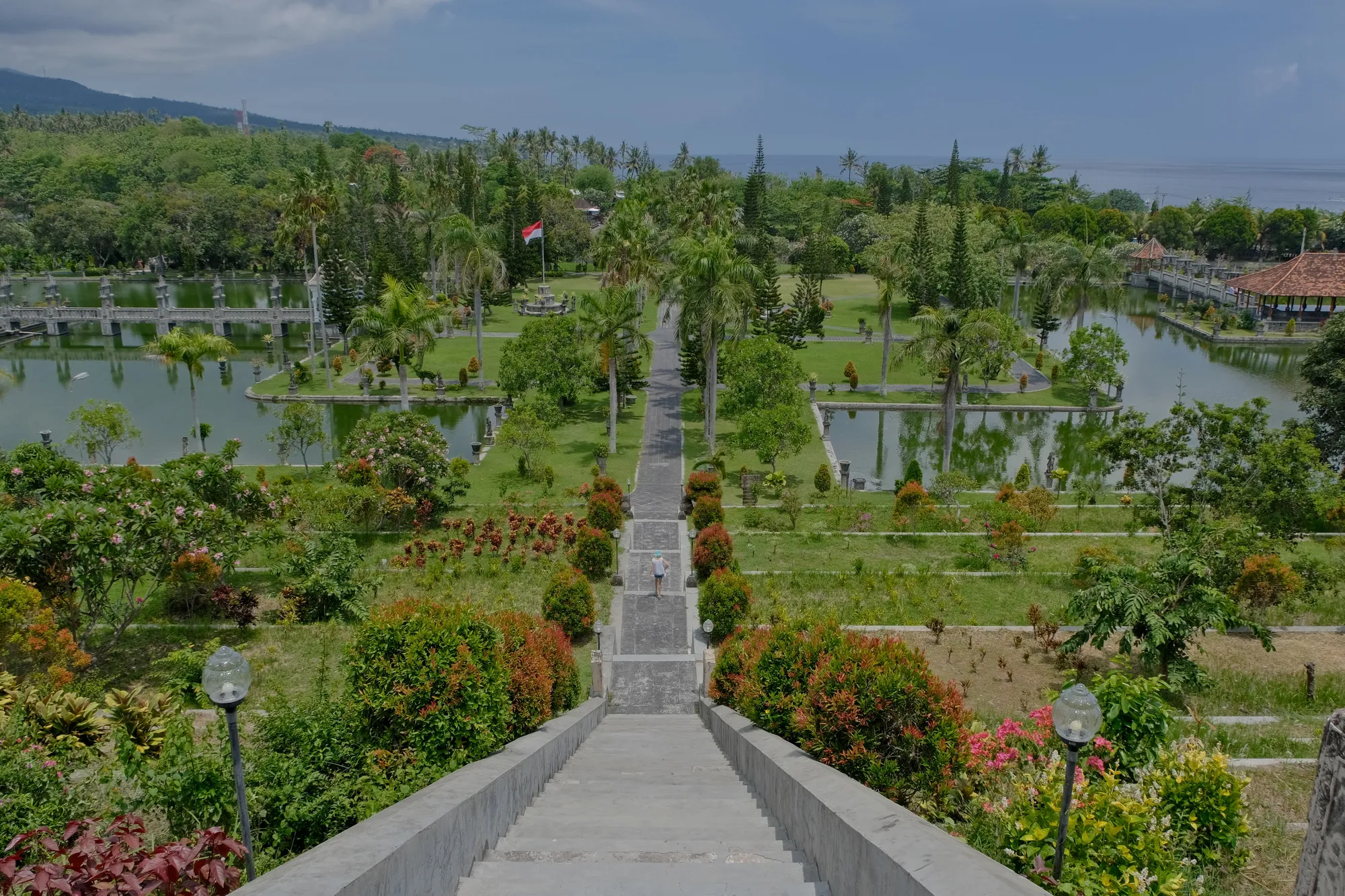
The significance of Taman Ujung lies not only in its architectural beauty but also in its representation of Hindu culture in Bali. It served as a royal retreat for meditation and spiritual gatherings. Constructed by a visionary king I Gusti Bagus Jelantik, the last king of Karangasem, it showcases a blend of Balinese traditions and European influences.
The palace's design goes beyond aesthetics, with its interconnected pools symbolizing the Balinese philosophy of Tri Hita Karana—living in harmony with the gods, humans, and nature.
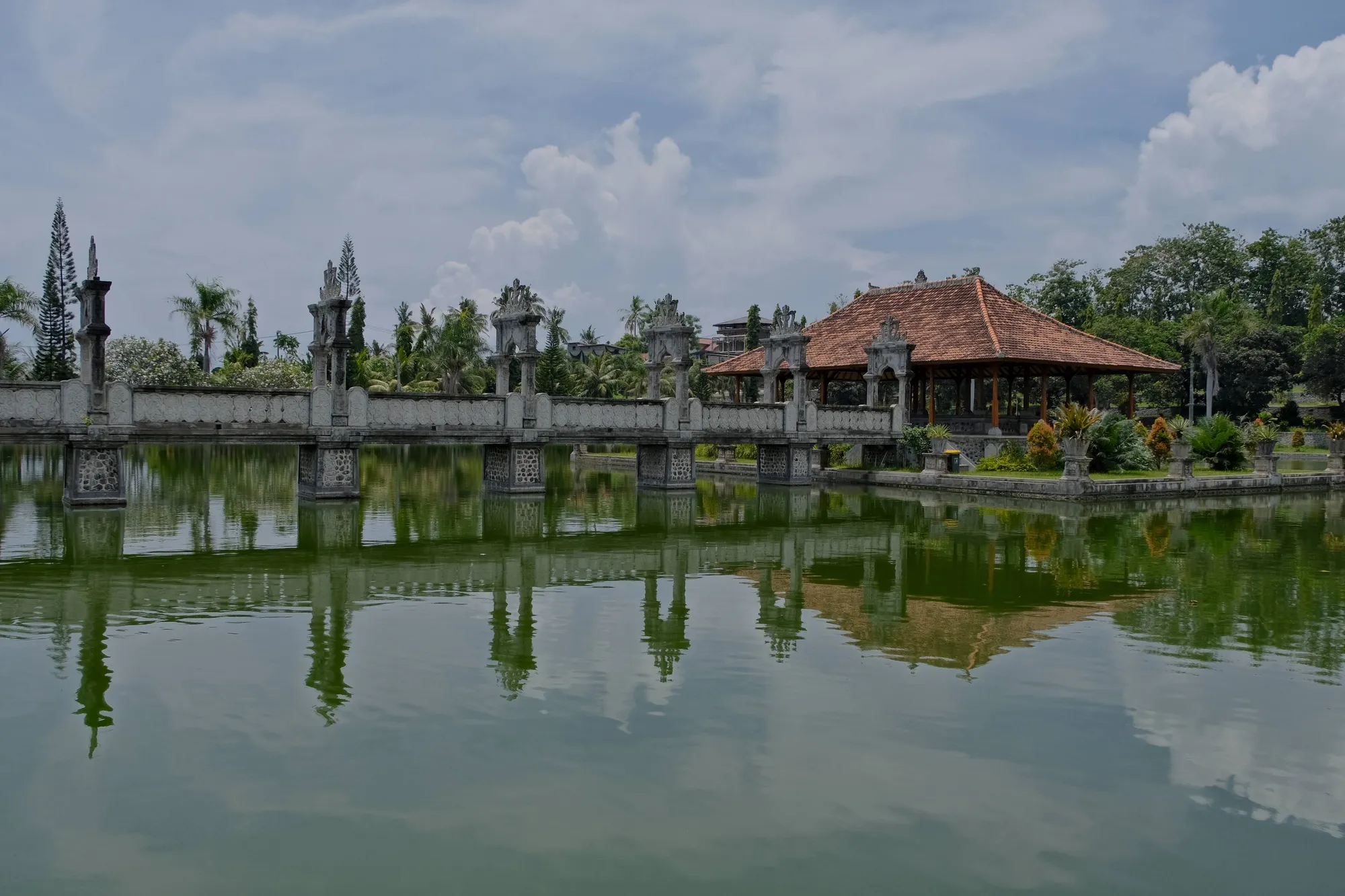
As we wandered through the tranquil grounds, the serene water reflections and vibrant greenery created a picturesque atmosphere that felt like stepping back in time.
The blend of historical architecture and natural beauty made our visit to Taman Ujung Water Palace a truly memorable experience, highlighting Bali's rich cultural heritage.
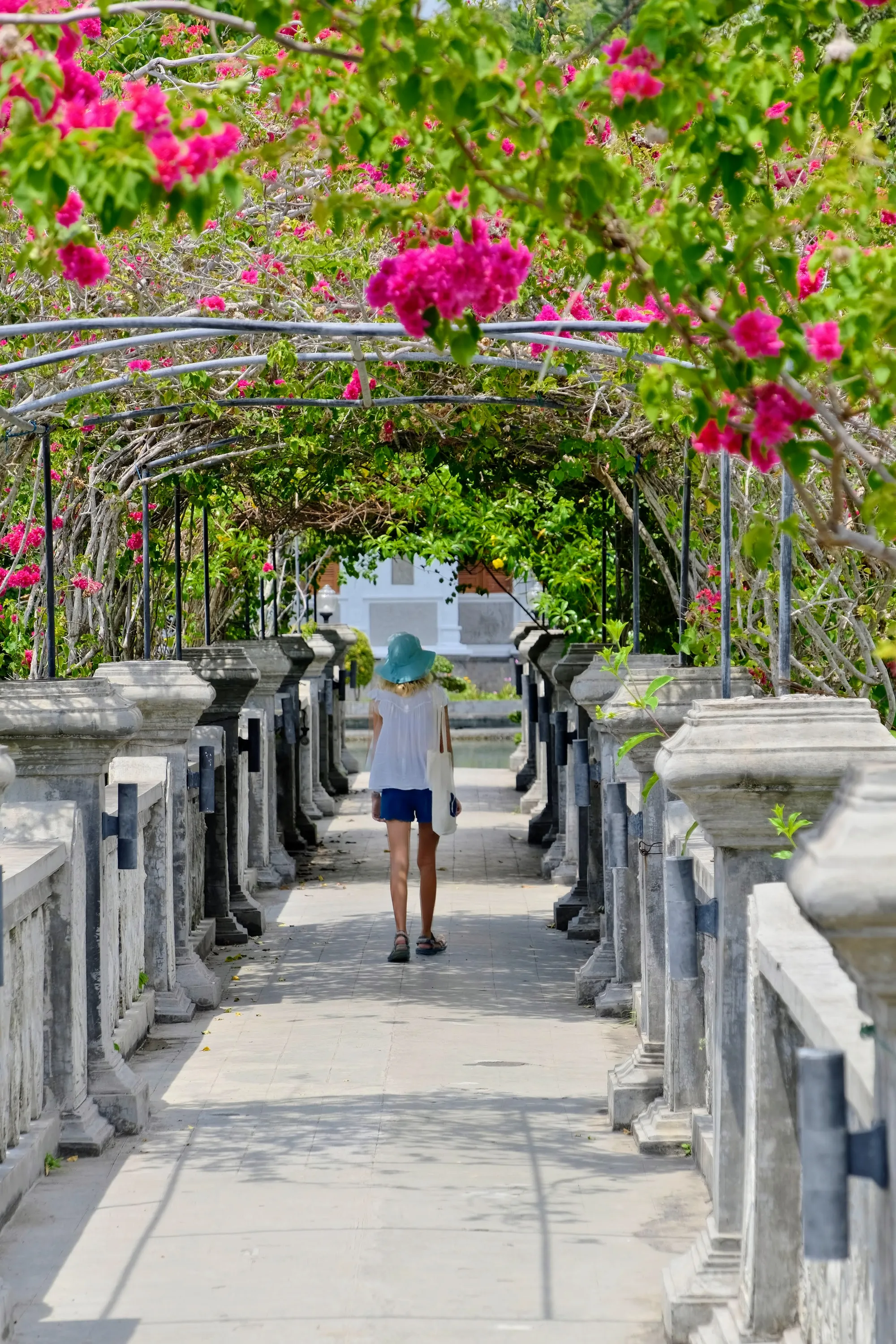
Our journey through Bali gave us an appreciation for the island’s rich Hindu culture and its seamless integration with daily life. Each temple visit revealed a vibrant community connected to its spiritual roots, with enchanting rituals and heartfelt offerings creating a vivid tapestry of devotion.
As we continue our travels through Southeast Asia, we carry the lessons learned and cherished memories from this enchanting paradise, reminding us that every corner of the world holds its own sacred stories waiting to be discovered.
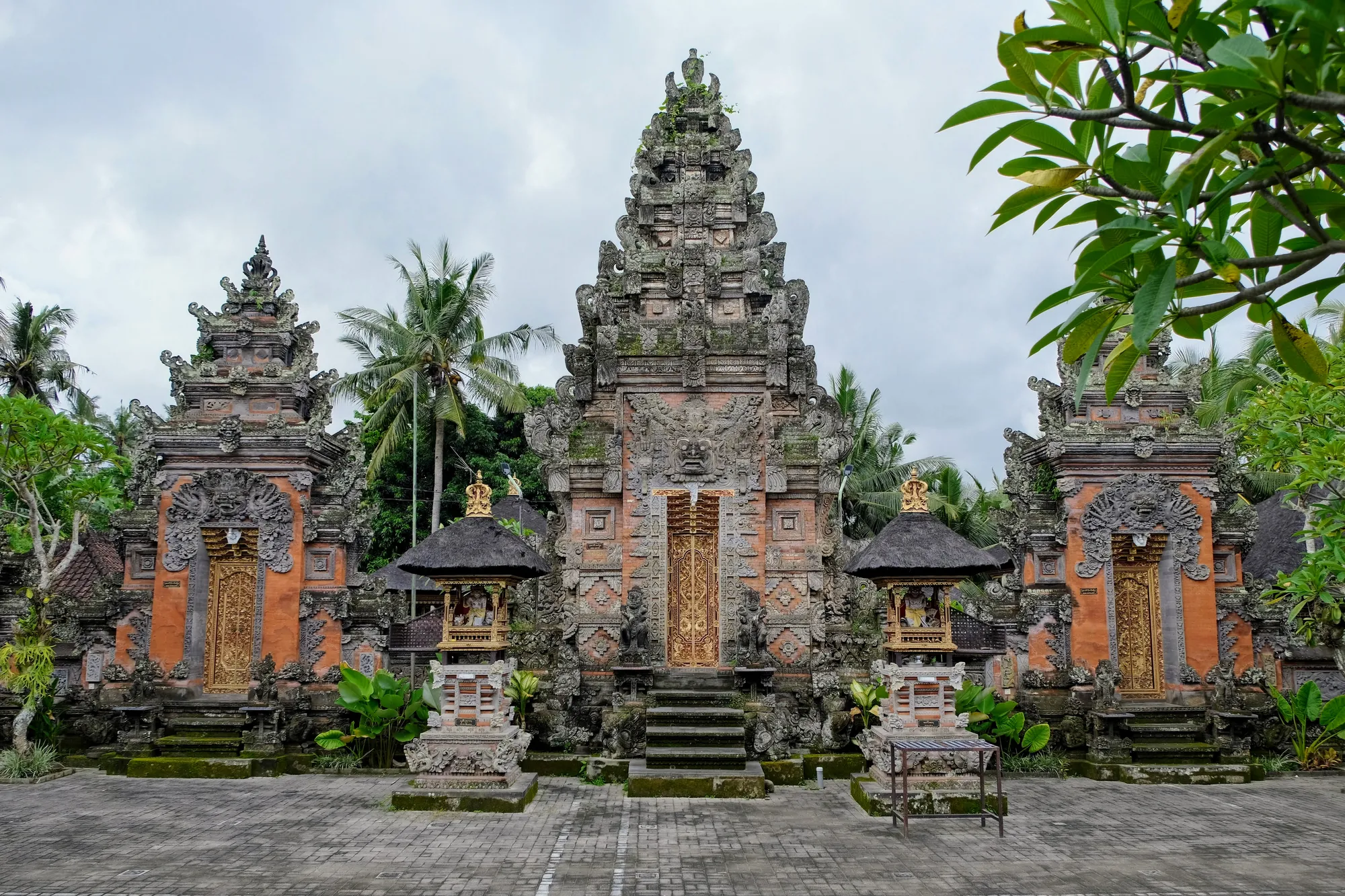
Continue Exploring
Bali’s Culture and Art
A journey through Bali’s captivating art and culture. From authentic craftsmanship to hands-on experiences, the island surprises with its deep-rooted traditions.
Amed, Bali's Quiet Diving Paradise
Escape the crowds and uncover Amed, Bali’s best-kept secret. From world-class snorkeling and diving to off-the-beaten-path black sand beaches and charming villages, Amed invites you to explore its hidden gems in the quieter side of Bali.


